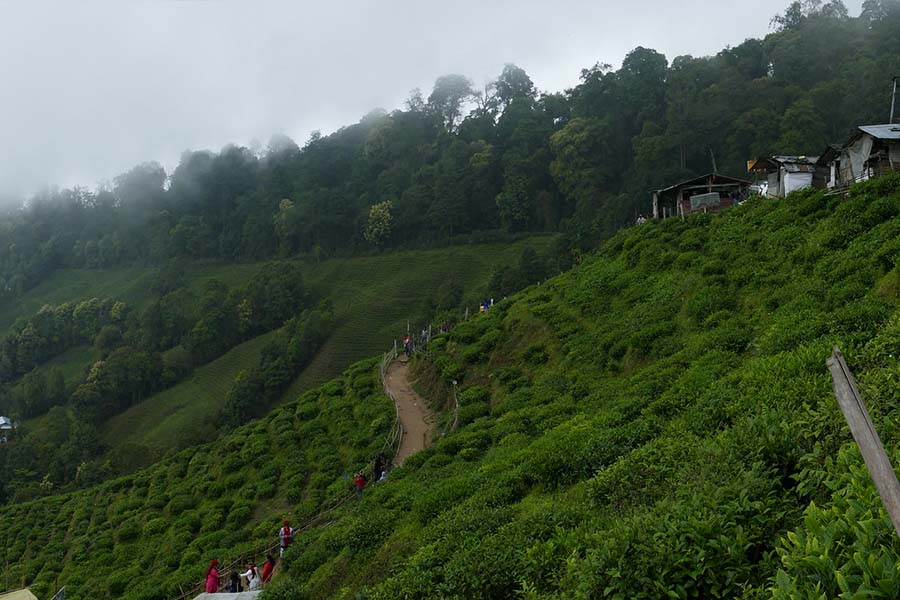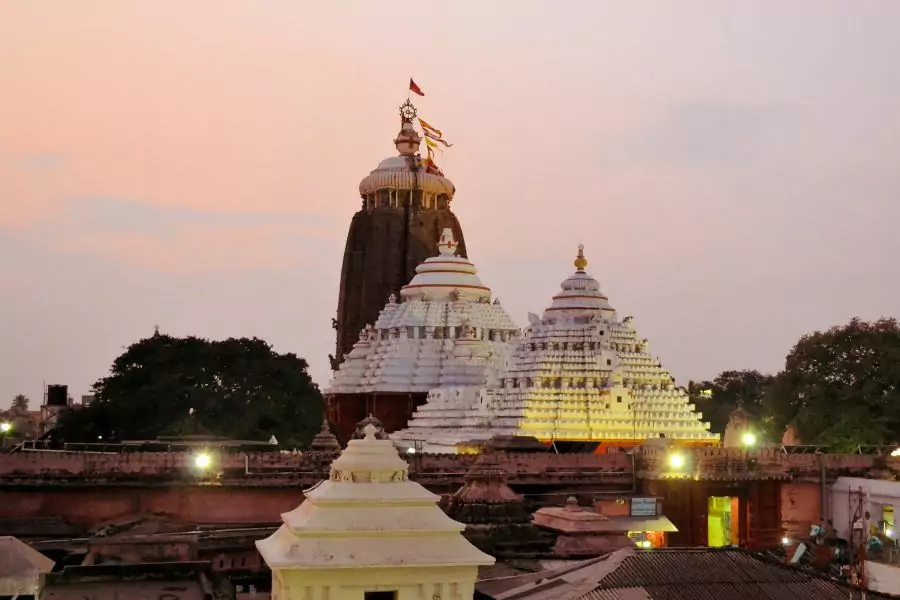Hawa Mahal Jaipur – History, Entry Fees and Timing

Hawa Mahal, or the “Palace of Winds,” stands as one of India’s most iconic landmarks. Nestled in the heart of Jaipur, Rajasthan, this architectural wonder showcases the ingenuity and artistry of ancient Indian craftsmen. Its unique design and historical significance make it a must-visit for anyone exploring the Pink City.
Historical Background
In 1799, Maharaja Sawai Pratap Singh commissioned the construction of Hawa Mahal. Designed by Lal Chand Ustad, the palace exemplifies Rajputana architecture. It was primarily built as an extension of the City Palace to allow royal women to observe street festivals and daily life without being seen, adhering to the strict purdah system of the time.
Architectural Marvel

The design of Hawa Mahal blends Hindu Rajput architecture with the Islamic Mughal style, showcasing the best of both worlds. The palace, constructed from red and pink sandstone, has a distinctive hue that complements the vibrant colors of Jaipur.
Unique Design Elements
The most striking feature of Hawa Mahal is its five-storey facade, adorned with 953 small windows, or jharokhas. These intricately latticed windows allow cool air to pass through, keeping the palace comfortable during the scorching summer months – a natural cooling system akin to air conditioning.
Structural Layout
The palace’s facade resembles the crown of Lord Krishna, reflecting Maharaja Sawai Pratap Singh’s devotion. The structure is shaped like a pyramid, gradually tapering off as it ascends. Each of the five floors has a different layout and decor, adding to the architectural intrigue of the building.
The Pyramid Shape
The pyramid shape of Hawa Mahal is not only aesthetically pleasing but also structurally sound. It ensures stability and even weight distribution, crucial for a building with such an intricate design and numerous windows.
Symbolism in Design
The design of Hawa Mahal is rich with symbolism. The beehive structure represents the Hindu deity, Lord Krishna, and the intricate patterns signify the fusion of Rajput and Mughal architectural traditions.
Cultural and Religious Significance
The palace’s construction reflects the cultural and religious sensibilities of the time. It stands as a symbol of the devotion of the Jaipur royals to their gods and their commitment to the welfare of their subjects.
Interior Details
While the exterior of Hawa Mahal is awe-inspiring, the interior holds its own charm. The walls and corridors are adorned with delicate carvings and mirror work. The rooms are interconnected with courtyards, ensuring privacy and comfort.
Intricate Carvings
Every corner of Hawa Mahal boasts intricate carvings, showcasing the incredible skill of the artisans. These carvings are not only decorative but also serve functional purposes, like enhancing the airflow throughout the palace.
The Hawa Mahal Experience

Visiting Hawa Mahal is a journey through history. To make the most of your visit, here’s what you need to know:
How to Reach
Hawa Mahal is located in the heart of Jaipur. You can reach it by taking a taxi or an auto-rickshaw from any part of the city. The Jaipur Railway Station and Jaipur International Airport are well-connected, making it convenient for travelers coming from other parts of India.
Entry Fees:
- Indian Nationals: ₹50 per person
- Foreign Nationals: ₹200 per person
- Camera Fees: ₹50 for a still camera, and ₹200 for a video camera (if applicable)
Timing:
Closed: On Fridays, the monument remains closed for visitors.
Open: 9:00 AM to 5:00 PM
Panoramic Views
One of the highlights of visiting Hawa Mahal is the panoramic view from the top. From here, you can see the bustling streets of Jaipur, the majestic City Palace, and the astronomical wonders of Jantar Mantar.
Views from the Top
The view from the top of Hawa Mahal is breathtaking. It offers a unique perspective of Jaipur, with its blend of historical and modern elements.
Cultural Significance
Hawa Mahal plays a crucial role in the cultural landscape of Jaipur. It serves as the center of many local festivals and events, reflecting the rich traditions and vibrant culture of Rajasthan.
Festivals and Events
The palace comes alive during festivals like Teej and Gangaur. During these times, it is beautifully decorated, and the atmosphere is filled with music and dance, making it a lively place to visit.
Restoration and Preservation
Preserving Hawa Mahal has been a priority for the local government and various heritage organizations. Ongoing restoration efforts ensure that this historical treasure remains intact for future generations.
Challenges Faced in Restoration
Restoring such an ancient structure comes with challenges. Maintaining the palace’s original beauty and authenticity while using modern techniques requires careful planning and execution.
Surrounding Attractions
Hawa Mahal’s central location makes it easy to visit other nearby attractions. The City Palace, Jantar Mantar, and the vibrant local bazaars are all within walking distance.
City Palace and Jantar Mantar
These iconic landmarks offer deeper insights into the history and science of the region, making them perfect companions to a visit to Hawa Mahal.
Visitor Information
For those planning a trip to Hawa Mahal, accessibility is excellent. Numerous accommodations nearby range from budget to luxury, ensuring a comfortable stay for all visitors.
Accessibility and Nearby Accommodations
Jaipur is well-connected by air, rail, and road, making it easy to reach. Numerous hotels and guesthouses in the vicinity cater to different budgets and preferences.
Photography Tips
Hawa Mahal is a photographer’s paradise. The best time for photography is early morning or late afternoon when the lighting enhances the pink hues of the palace.
Best Angles and Times for Photography
Capture the intricate details of the jharokhas and the panoramic views from the top for some truly memorable shots.
Myths and Legends
Like any historical monument, Hawa Mahal is shrouded in myths and legends. These stories add an element of mystery and allure to the palace.
Popular Stories
One popular legend suggests that the unique design of Hawa Mahal was inspired by the crown of Lord Krishna, a testament to the Maharaja’s devotion.
Hotels near Hawa Mahal Jaipur
Hotel Pearl Palace
- Distance: Approximately 1 km
- Description: A charming, budget-friendly hotel known for its unique décor and friendly service.
The Raj Palace

- Distance: Around 1.5 km
- Description: A luxurious heritage hotel offering a blend of traditional Rajasthani and modern amenities.
Shahpura House
- Distance: About 2 km
- Description: A boutique hotel with traditional architecture, providing a royal experience in a serene setting.
ITC Rajputana, A Luxury Collection Hotel
- Distance: Roughly 2.5 km
- Description: A high-end hotel with luxurious rooms, excellent dining options, and a full range of amenities.
Umaid Bhawan Heritage House Hotel

- Distance: Approximately 3 km
- Description: An elegant heritage property offering comfort and a glimpse into Rajasthan’s royal past.
Conclusion
Hawa Mahal is more than just an architectural marvel; it symbolizes the rich cultural and historical heritage of Jaipur. Its intricate design, historical significance, and the stories it holds make it a must-visit for anyone traveling to Rajasthan.
FAQs
- What is the best time to visit Hawa Mahal?
- The best time to visit Hawa Mahal is early in the morning or late afternoon to avoid the heat and enjoy the beautiful lighting.
- Are there guided tours available?
- Yes, guided tours provide in-depth information about the history and architecture of Hawa Mahal.
- How long does it take to explore Hawa Mahal?
- It typically takes around 1-2 hours to fully explore Hawa Mahal, depending on your pace and interest.
- Is Hawa Mahal accessible for people with disabilities?
- While the ground floor is accessible, the upper floors may be challenging to access due to narrow staircases.
- What are some nearby attractions to visit along with Hawa Mahal?
- Nearby attractions include the City Palace, Jantar Mantar, and the local bazaars, all offering unique experiences and insights into Jaipur’s rich heritage.


